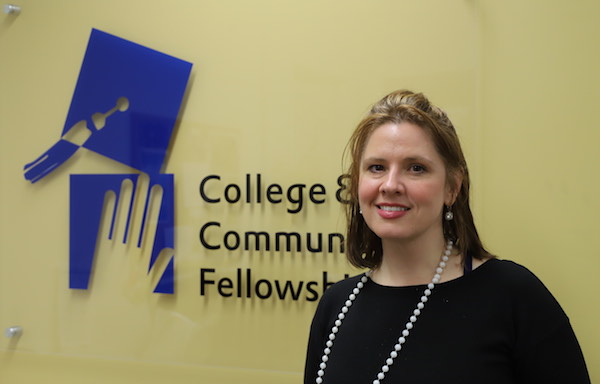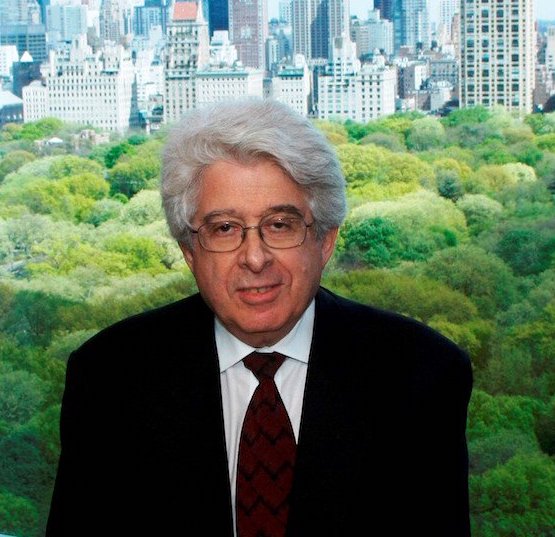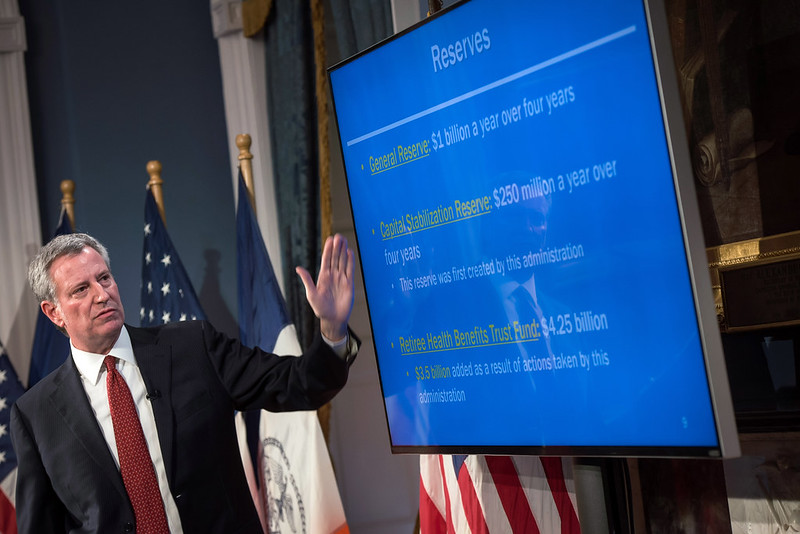Letter to the Editor: Next Step for New York College-in-Prison Program That Turned My Life Around

Stacy Burnett, the author (photo: College & Community Fellowship)
To the Editor:
Regarding "New York College-in-Prisons Program is Flourishing" (Dec. 3): I am proof there can be no rehabilitation in prison without education, and that restoring Tuition Assistance Program (TAP) funding for college-in-prison participants must be a top priority if New York is serious about building safer communities.
In 2013, I was released from Albion Correctional Facility with $40 and a bus ticket to a county that did not want me. After serving five years, I had spent 1,428 hours in solitary confinement, compared to just 30 hours in a college classroom – there was no funding for college at Albion for people over age 25. In 2017, I was returned to prison, and shipped to a facility that offered the Bard Prison Initiative.
This time, I spent those thousand-plus hours in classrooms with professors who demanded more of me than I thought I had to give. I was challenged, and despite my physical confinement to a few dusty acres, my world expanded. And it continues to expand. Parsing Shakespeare and Anna Karenina provided me with critical thinking and analytical skills that I apply to everyday life. Education – not prison – enables me to be productive today. I am part of a new community of achievers.
New York taxpayers have spent over a quarter million dollars to confine me – funding TAP is so small in comparison. Studies prove my education is the best insurance against another term of incarceration.
The Bard Prison Initiative turned my life around in less than a year – something that the New York State penal system could not accomplish on its own in five. It’s time the New York State Legislature continue to lead in criminal justice reform and turn on the TAP for people in prison.
Sincerely,
Stacy Burnett, a writer, formerly incarcerated Bard Prison Initiative student and current College & Community Fellowship (CCF) fellow who lives in Queens and is working alongside CCF to restore TAP funding for incarcerated students through the Turn On The Tap campaign.
***
Have an op-ed idea or submission for Gotham Gazette? Email This email address is being protected from spambots. You need JavaScript enabled to view it.
Jay Kriegel’s Unmatchable New York Ethos

Jay Kriegel, 1940-2019 (photo via ABNY)
Jay Kriegel wasn’t a New Yorker, he was New York. In Jay our city was personified, embodied, embedded, in a being the likes of which we will ever know again.
The architecture of his hair alone—towering, iridescent, and high density—distinguished him from the mere mortals who ply our sidewalks, most of whom he knew. Walking Midtown with Jay was like being Mick Jagger’s wingman. From sales clerks to senators, he knew them all, and they all adored him. Ordering a meal with Jay was theater. By the end we knew everything about our server, where they were from, where they had studied acting, and how enamored they were, man or woman, twinkly-eyed, of Jay.
Never mind that for the sake of work we were having breakfast in the Regency surrounded by the self-important; to Jay our server held much more currency than the context, because he knew the actual backbone of New York.
Like so many of Gotham’s now-graying urbanists, I first met Jay while I was employed in the first term of the Bloomberg Administration and he was running the Olympics bid. He was our Yoda. Grouchy, mischievous, brutally honest, there was no bullshit with Jay. For all the pedigree we imported from the halls of Cambridge or Berkeley or Ithaca or Ann Arbor, it was no match for the wisdom of the streets that was Jay’s mastery.
Once he counseled that I should get my shoes shined during rainy weather to protect them, contrary to those who shined their shoes to look good on sunny days. “Rookie mistake,” the pro quipped.
Humility was Jay’s prime directive. In a city of dense egos and vainglorious masters of the universe, Jay was the master of self-effacement. It is this lesson, the hardest lesson for so many of us, that Jay exuded.
As Roy Bahat, a once Jedi apprentice, recently noted in his beautiful essay, for Jay it was about them, not you. Furthermore, this humility, if it was to be authentic, had to be anonymous—there would be no virtue-signaling for Jay. For the innumerable people he had helped, from young students of limited means to we rookies of limited wisdom, there would be no accolades or likes in return for the shelter of his wings. Humility demanded closed door, whispered telephone conversations that led to unrewarded action, as I would learn so personally.
While working with Jay, my spouse Maria and I decided we wanted to adopt from India. Many of the principals around us were skeptical—why gamble with adoption when we already had a biological son? But not Jay. He loved the idea from the outset and would follow its developments daily. Had I heard from the adoption agency? What is the condition of the orphanage? Were there doctors near? Then a magic moment arrived. An email. The agency had identified for us a beautiful three-month-old girl. A photo. Double-click. Two massive eyes pierced the screen. I’m not sure who was more in love, me, Maria, our son, or Jay.
Eight months passed when the adoption agency called: her paperwork was finally ready, it was time to fly. Days later, my heart beating like hummingbird, Avia and I met for the first time. Calamity struck when we flew to New Delhi to get a visa from the U.S. Embassy. Ironically while the Indian bureaucracy had processed her paperwork, the American bureaucracy hadn’t. Embassy staff callously explained that we couldn’t leave India for at least eight weeks, an impossible timeframe.
Panic stricken, I had one instinct: call Jay. It was 10 p.m. in New York, when I knew his long nights typically began. The consummate fixer, Jay was sleeplessly, passionately on it. Days went by until the hotel phone rang. It was the senior consular officer, politely inviting us to the embassy to speak in person.
“Mr. Chakrabarti, who are you exactly?”
“I’m an architect from New York.”
“Mr. Chakrabarti, in the last 48 hours this embassy has been inundated with emails and phone calls from around the world, from Condoleeza Rice’s office, from the Carlyle Group, from several ambassadors, from...”
I smiled silently, picturing Jay working the phone like a lightsaber. Avia and I were on a flight two days later, home before Christmas, as was the enormous stuffed Orangutan that Jay and his dear Kathryn had sent as a homecoming gift.
I am ever aware that the unconnected could never have pulled off what we did, and that this was both unfair and much the way of the world.
Jay, a man of a different generation, from a different New York, understood both conditions, understood this liminal zone between aspiration and reality. He knew that we should always fight for fairness, but we also should help whom we can when we can in this unjust, untidy world.
Jay’s New York understood humanity without binaries—to him there was good in both Jane Jacobs and Robert Moses. Much like Jay’s hair, between black and white was not the gray of compromise, but the silver of wisdom. At his knee we learned that the real dark side of the force were those who lived in a world of absolutes—those who fought against change at all costs, or those who fought for profit over everything. His is a lost ethos today, drowning as we are in the toxic, humorless rhetoric of absolutism.
For Jay the only absolute was New York itself. His desire for the success of each and every New Yorker eclipsed all else. The contagion of his wit and generosity spread to most of us fortunate enough to have been in his orbit, yet none of us can be Jay, none of us can come close. We can only aspire to embody Jay Kriegel’s undying spirit, a giant walking into the sea, taking with him a New York we can only hope to someday recover.
***
Vishaan Chakrabarti is an architect and author. On Twitter @VishaanNYCA.
***
Have an op-ed idea or submission for Gotham Gazette? Email This email address is being protected from spambots. You need JavaScript enabled to view it.
Worrisome City Budget Update Buried by Holiday and State Woes

Mayor de Blasio gives a budget presentation (photo: Ed Reed/Mayoral Photo Office)
It is an axiom of media relations that when you don’t want something to get a lot of attention, you make it public at a time when few will be paying attention. So, the Friday before last week’s Thanksgiving holiday, when reporters and news consumers were getting ready to greet family, cook and/or travel, both Governor Cuomo and the Mayor de Blasio announced unsettling budget reports.
The governor released an update to the state’s four-year financial plan (required by law on October 31 but usually issued a few weeks late) and the Mayor released the required November mid-year modification to the current fiscal year (FY 2020) budget and revisions to the city’s financial plan for the subsequent three years.
This play did not work very well for the governor because the news was dramatic enough to overcome the timing of its release: due to the tremendous growth in the cost of Medicaid, the state’s operating deficit for the fiscal year that will begin on April 1, 2020 is now projected to exceed $6 billion and grow to $8.5 billion in 2023.
The mayor was more fortunate in that he did get by with very little news coverage of his budget revisions. But that doesn’t mean this information was unworthy of attention and concern. City spending in the current fiscal year is now expected to be $1.6 billion higher than was planned in the budget adopted by the City Council last June, a budget that was already $94.9 billion, or 3.1% more than the budget for the previous year (using Citizens Budget Commission’s adjusted figures).
In the course of the last six months, the mayor, often together with the Council, has announced a number of new initiatives and program expansions, for example higher wages for pre-kindergarten teachers and public defenders, criminal justice reforms (some required by state legislation), more mental health interventions. All of these efforts come at a cost, frequently including new hiring, and the cumulative impact can now be seen in the budget modification.
Headcount is up 1,148 positions in just the last six months. Current total city budgeted headcount is 334,581, growing to 336,005 in FY 2021, and 338,000 in FY 2022 and FY 2023 -- far exceeding the peak before the 2008 recession of 311,018. Not only do all these new hires mean more payroll now, but they will also go into the base for calculating the cost of city-provided pensions and health care benefits far into the future.
The mayor promises to offset much of the increased costs with savings, but most of the offsets are from interest re-estimates on debt service and reimbursements from the state and federal governments, not recurring efficiencies. Indeed, the administration’s commitment to achieving savings is waning: this November citywide savings plan is only 73% of the plans issued in November 2017 and 2018. Are there not far more ineffective or outmoded programs, procedures, and services that can be improved, streamlined, or eliminated?
It is good news that personal income and business tax revenue are projected to grow and that federal reimbursements and grants have been received to offset some of the new expenses, but neither will continue indefinitely and the possible negative impact of the severe change to the SALT deduction and newly adopted rent regulations on property values, on which much of city revenue depends, is yet to be determined.
Most worrisome is that the increased spending included in the November city budget modification is likely only a preview of even more spending growth. There is still time between now and the adoption of the final budget for the next fiscal year (due by June 30 2020) for there to be even more new initiatives added on that will need to be paid for with city funds.
In the FY 2019 budget cycle, between November 2018 and June 2019 the mayor and City Council added $2.5 billion to the annual budget. The increase over the same time period in the most recent budget cycle was $1.6 billion. If the mayor and Council speaker continue this pattern in the coming months, the FY 2021 budget could grow by another $2 billion or more by June.
With the state facing precarious times, it could well implement cuts to state-funded programs like Medicaid and school aid. Under the current circumstances, it cannot be expected that the federal government will help the state or city with budget shortfalls. To be prepared we need more reserves, more efficiencies, and an end to endless hiring.
***
Carol Kellermann was president of Citizens Budget Commission from 2008 through 2018.
***
Have an op-ed idea or submission for Gotham Gazette? Email This email address is being protected from spambots. You need JavaScript enabled to view it.




